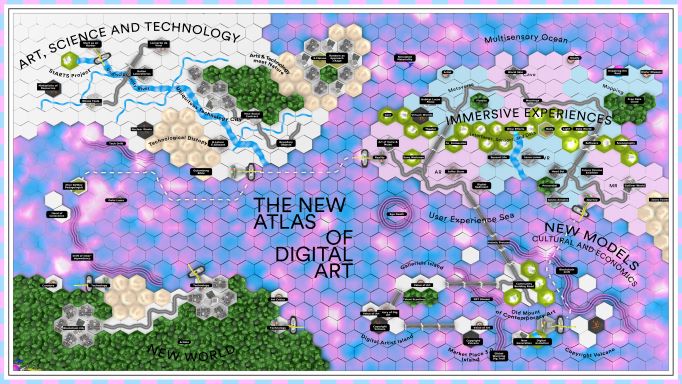Post
The map of art is the territory of art

The best summary of the proceedings of The New Atlas of Digital Art International Meeting could only be a map.
Cartography itself is a fascinating art, especially that of its origins.
Before the appearance of optical measuring instruments in the late eighteenth century, which gave scientific accuracy, maps were essentially an artistic exercise closer to representing a metaphorical worldview than a real one, closer to representing myth than geographical reality, maps representing a feeling, a world idea, a perception… In short, art.
But technology-enhanced geographic science has not withered beauty, it has not unveiled magic, quite the contrary. The digital has opened new and wider vistas of world representation, making visible to us the very far and the very small, coloring it with trajectories and signs that artists and scientists are working out together.
And our map, its continents of immersive reality, its connections of artistic processes, the atolls of galleries and artists, the cities of the Metaverse, the currents of NFT, the mountain ranges of contemporary art, and the multisensory seas, are both metaphor and tool for orienting ourselves in the world of digital art, as changeable as the motion of energy particles, now matter, now waves, subverting the ultra-famous concept of Alfred Korzybski Polish philosopher and mathematician for whom “the map is not the territory.”
Suppose there is one conclusion to come to at the end of these two days of intense and exciting work. In that case, it is that it is precisely indeterminacy, the irreducibility of the definition of both art and the digital, that has allowed us to draw this map, which is a temporary state, the precipitation of events into a still image of what is continually fluid and mobile, in a continuous shuffling of possibilities. Ultimately discovering that a conclusion is but a starting point and the best of all possible options.
Follow along, the adventure of the map does not end here. Stay Tune!
